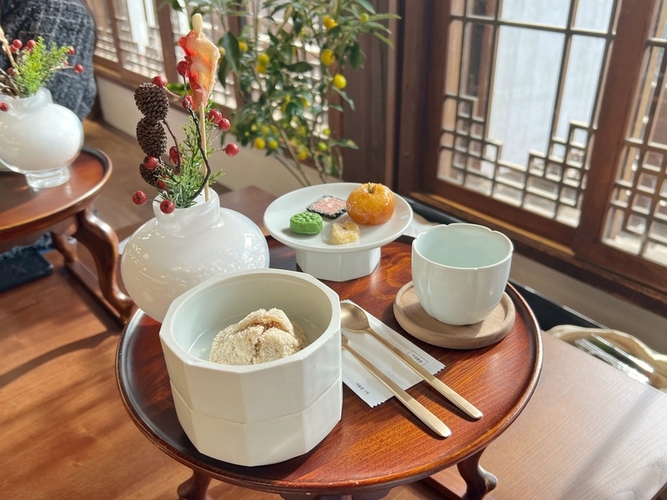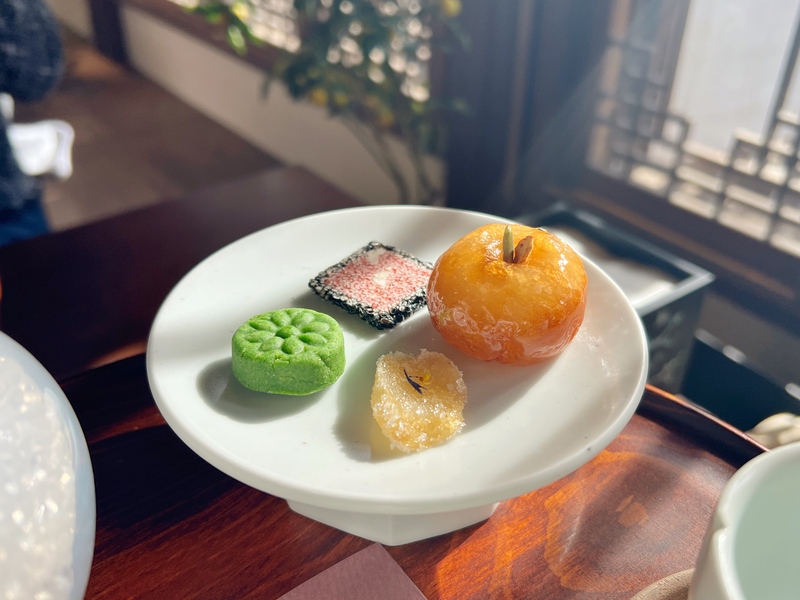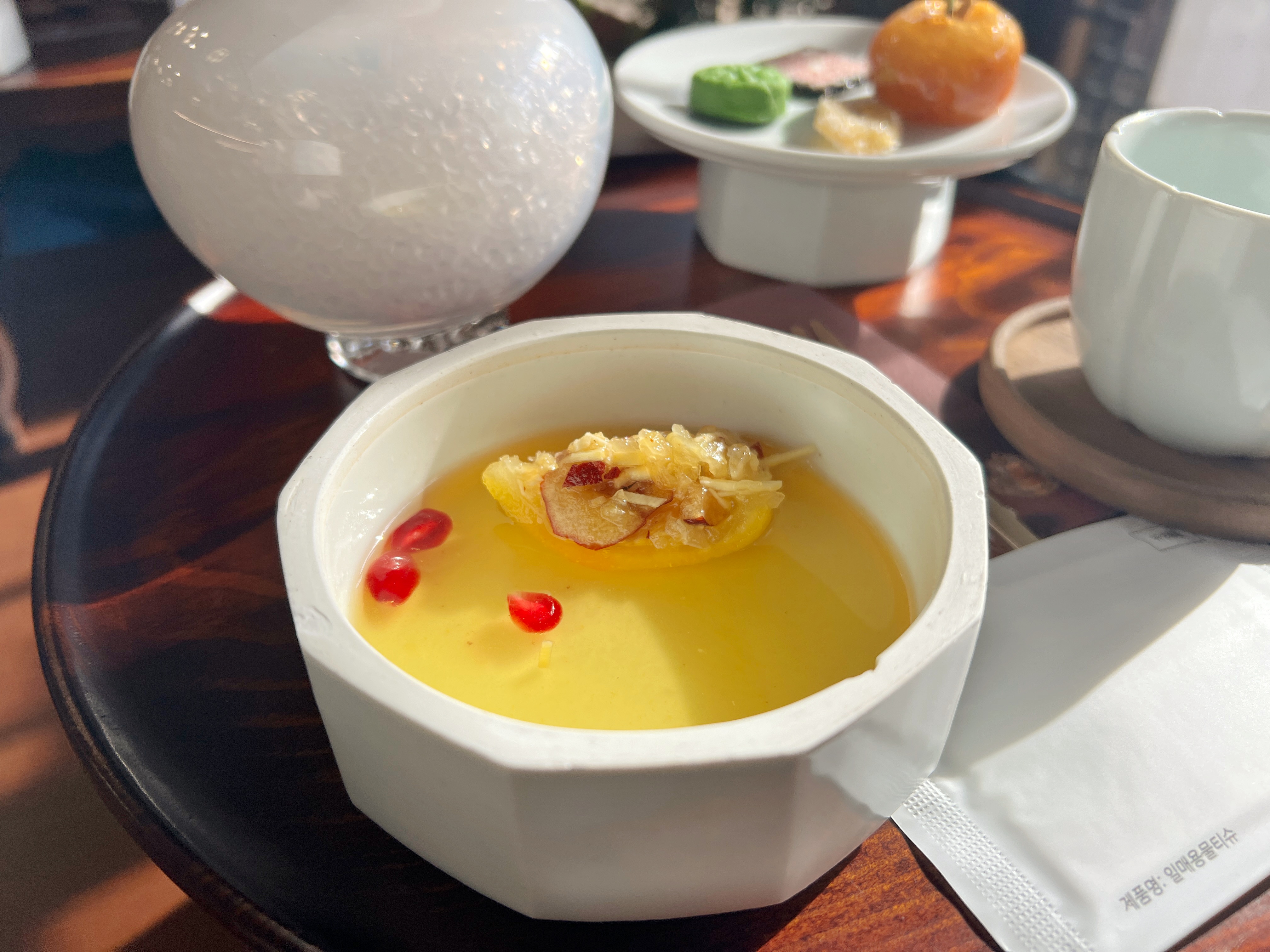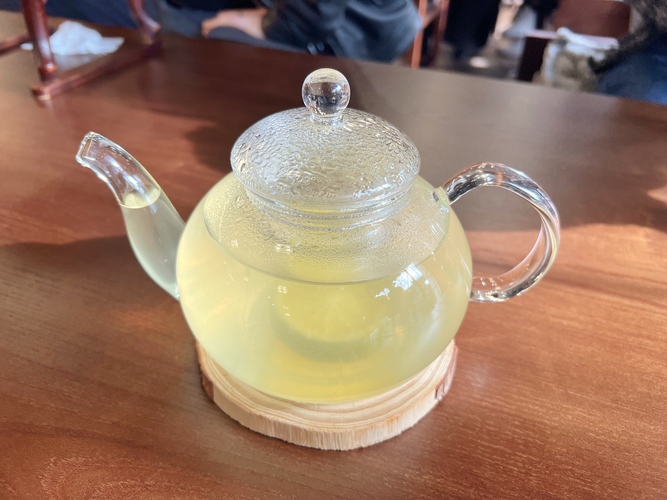- 한국어
- English
- 日本語
- 中文
- العربية
- Español
- Français
- Deutsch
- Pусский
- Tiếng Việt
- Indonesian
By Honorary Reporter Dhanisa Kamila from Indonesia
Photos = Dhanisa Kamila

Winter dessert course at Korea House
As the global impact of Korean cuisine grows, traditional Korean desserts are also gaining prominence. I was invited to try them on Jan. 19 at Korea House in Seoul under a program of the Korea Grand Sale, a tourism and shopping festival running from Jan. 11 to Feb. 29.
Korea House offers seasonal desserts once reserved for royalty amid the enchanting backdrop of traditional architecture and scenic landscapes. The annex Munhyangru was where the royal desserts were served. Before the dishes came out, a traditional Korean dance was performed by a graceful lady. Because the desserts always feature seasonal ingredients, the menu changes depending on season.

Green bean-pressed sweets, sweet rice puffs, braised ginseng in sweet sauce and Gaeseong juak (fried rice cake)
The first section had green bean-pressed sweets, sweet rice puffs, braised ginseng in sweet sauce, and Gaeseong juak or omegi (specialty rice cake of Jeju Island).

Yuja danji (sliced citron conserves)
The second was a two-tier bowl of rice cake with nut filling on the top and yuja danji (sliced citron conserves) on the bottom.

Warm green tangerine tea
Another section had braised apple in sweet sauce decorated with tiny pines. The sweet flavor originating from natural ingredients was smooth and complemented by a refreshing sourness and delicious nutty flavor.
During the session, a free-flow of warm yet refreshing green tangerine tea was also served.
Royal cuisine focuses on the taste of its natural ingredients, which could prove a bit bland for modern people accustomed to stronger artificial tastes. After getting familiar with it, however, one can grow accustomed to the taste and benefit from its healthy properties.
jihlee08@korea.kr
*This article is written by a Korea.net Honorary Reporter. Our group of Honorary Reporters are from all around the world, and they share with Korea.net their love and passion for all things Korean.
